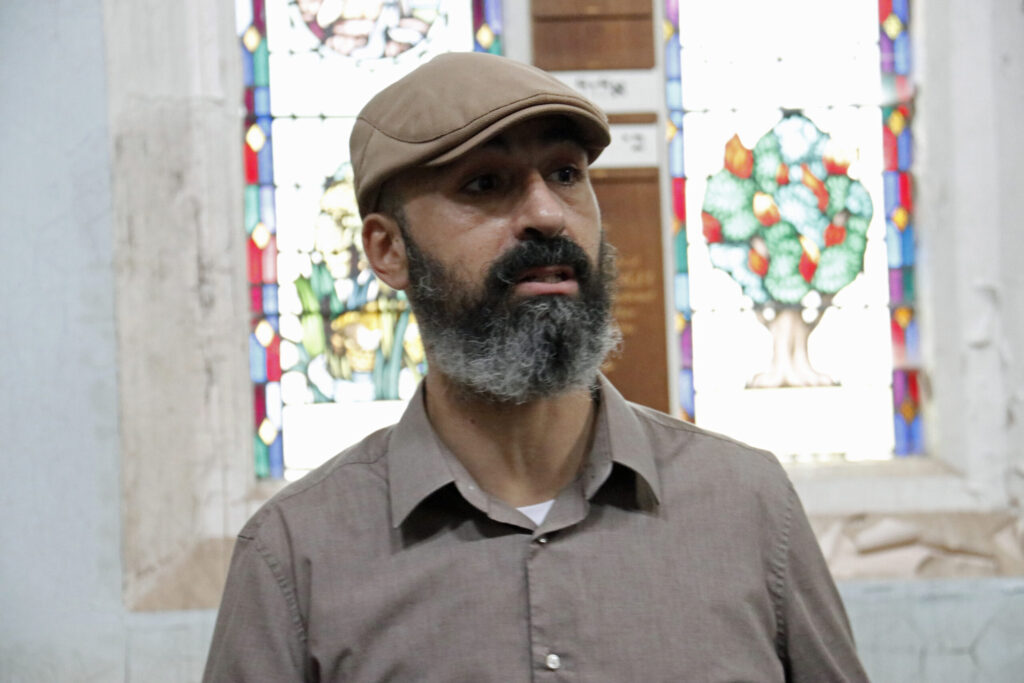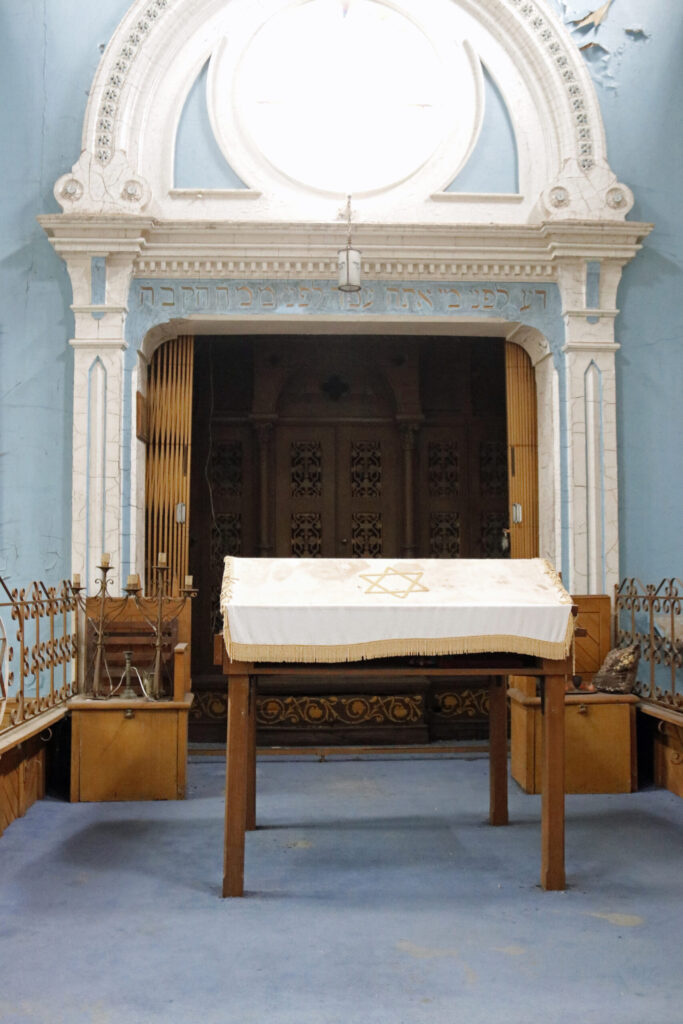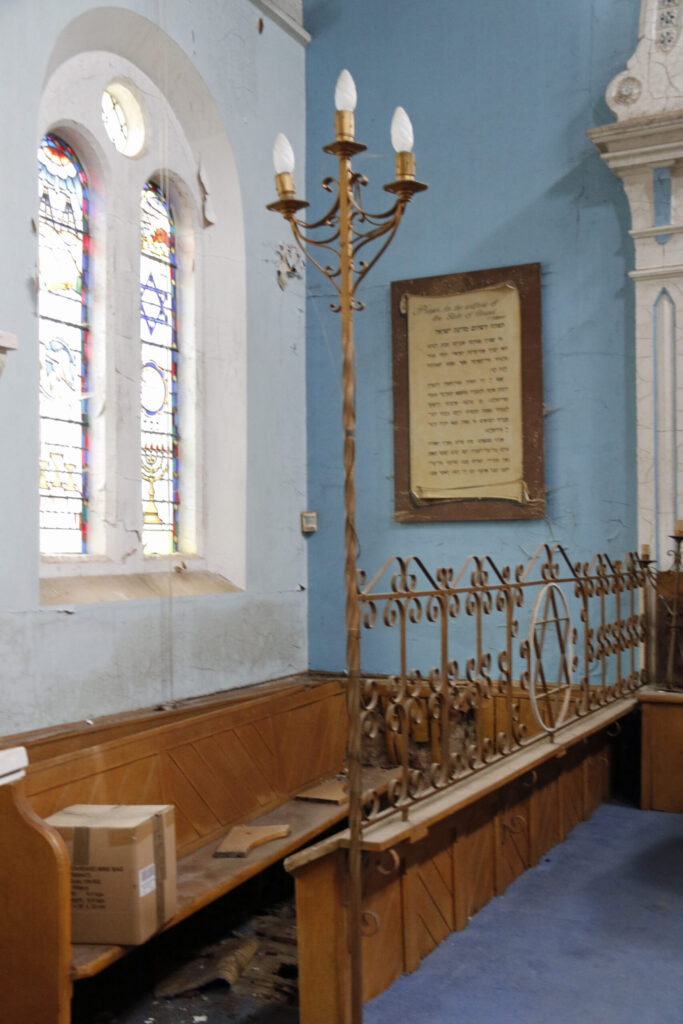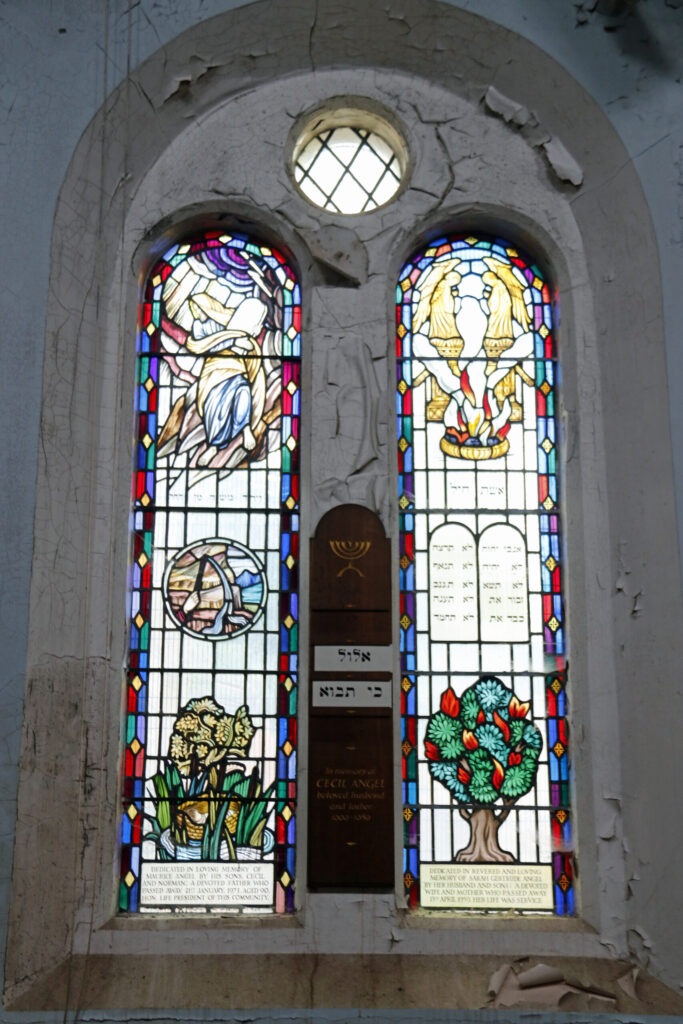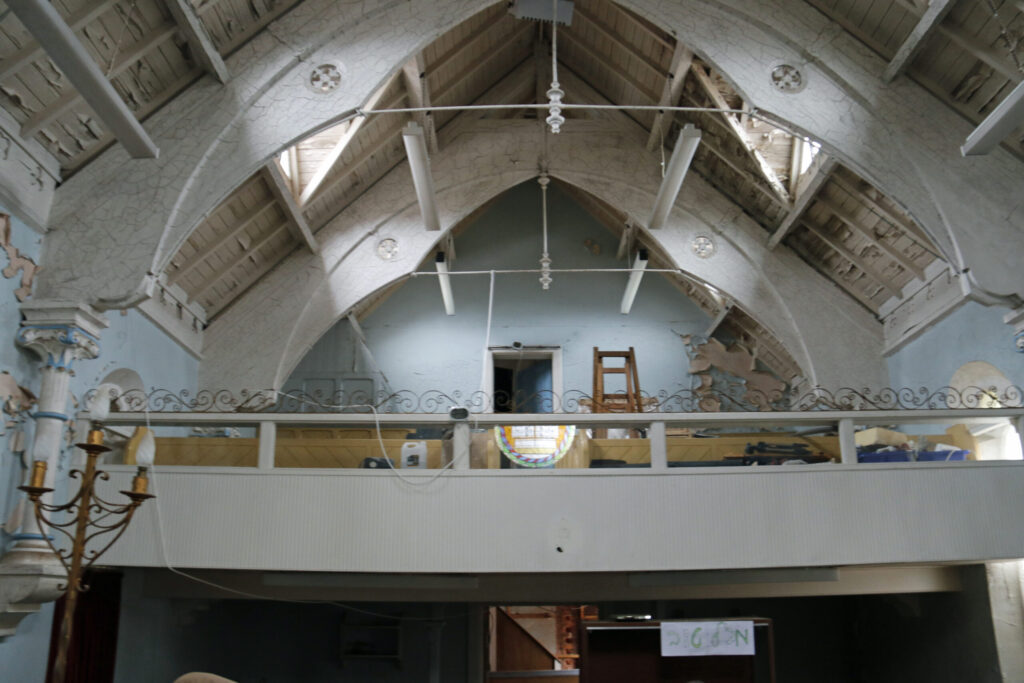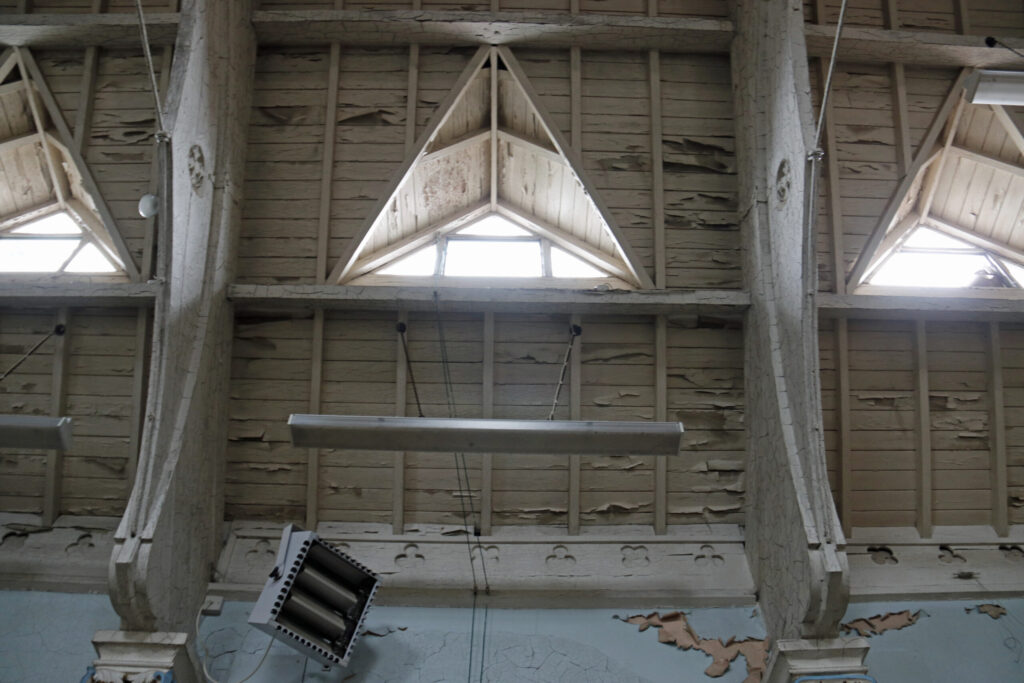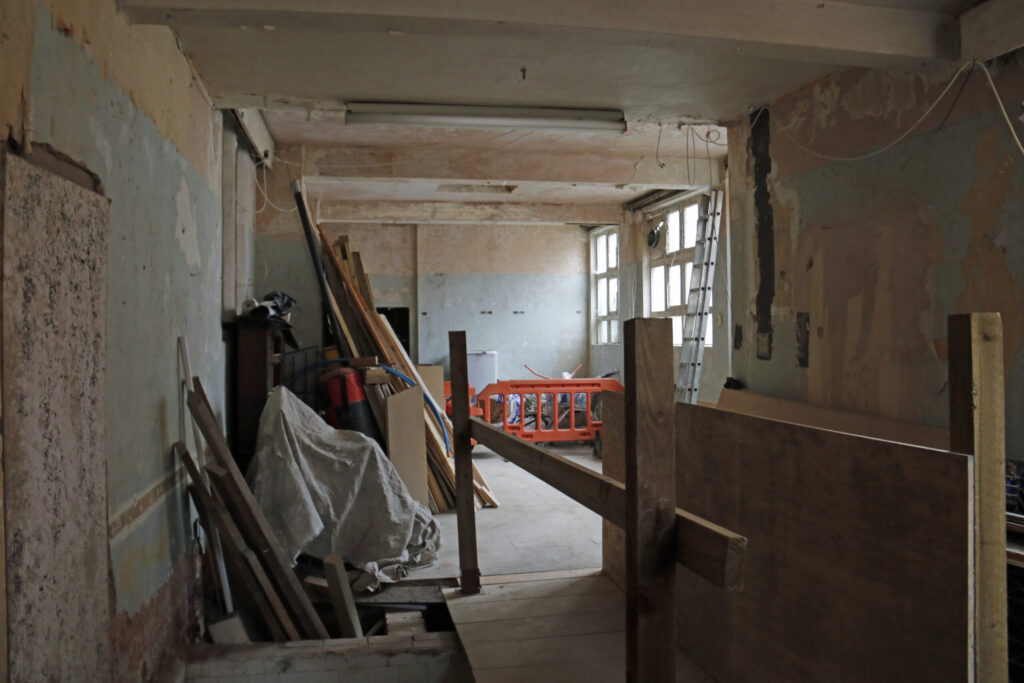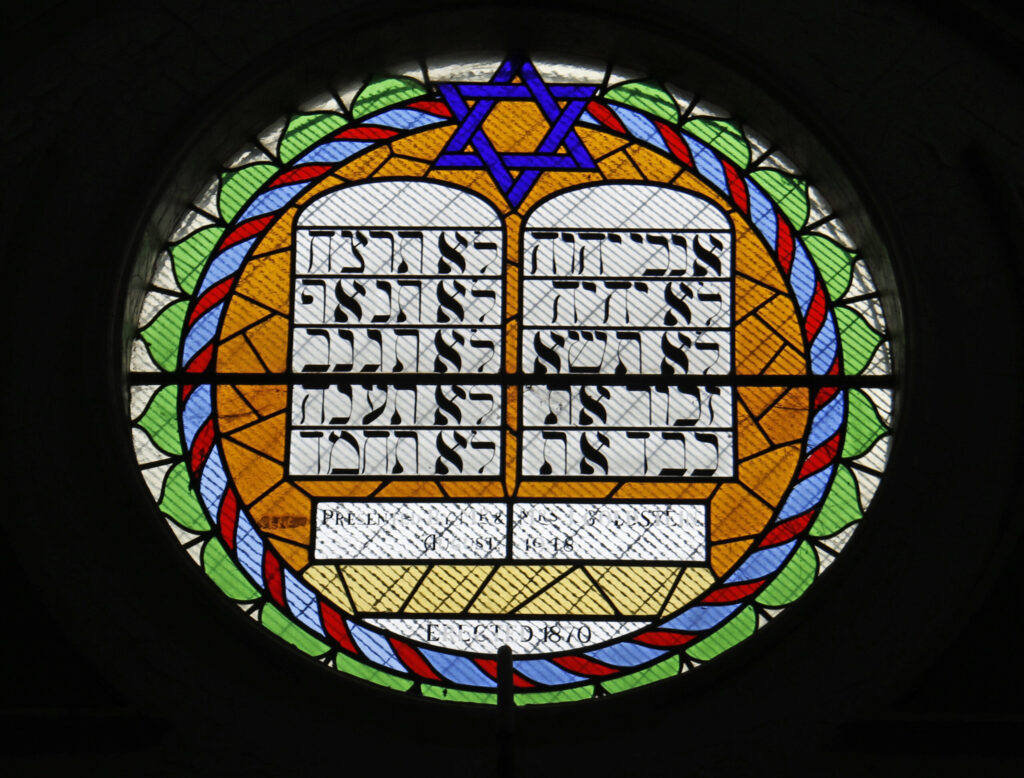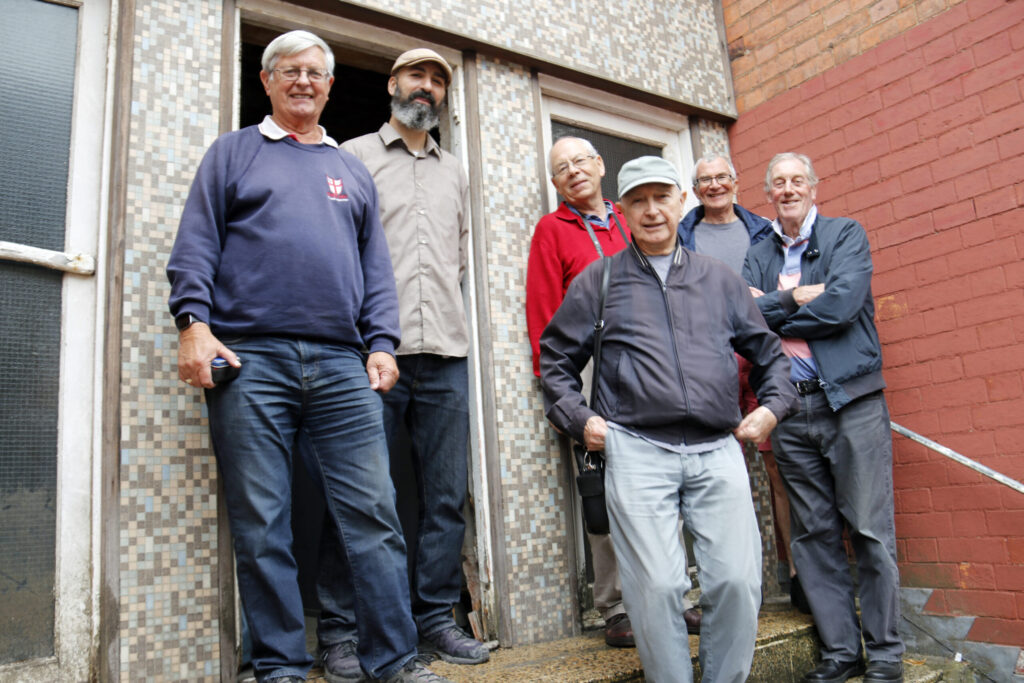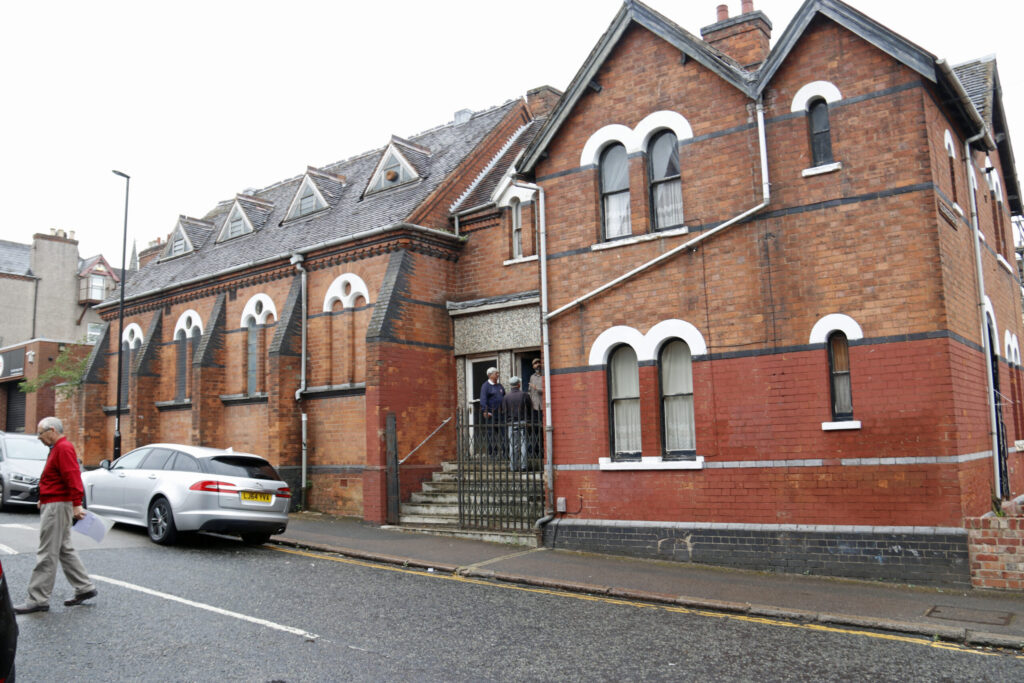
One 21st July two small groups from the CovSoc committee took an interesting tour of Coventry Synagogue, courtesy of Avi Tjordman.
The building is badly affected by dry rot and some of the floors are missing. Interestingly the original Victorian part of the building is largely unaffected by the rot, but extensions and work carried out to modernize the building in the 1960s are the worst affected parts. The rot has also spread into the adjoining Rabbi’s house.
The building was designed by Birmingham architect Thomas Naden in the Romanesque style and was opened in September 1870. It was constructed by Coventry builders Messrs. Hallam and Co. The stained glass was supplied by Mr. Holland, of Warwick. The total cost of the building and the opening event was £1,365, which was described as being “on a modest scale, according to a limited budget”.
The official opening of the Synagogue was reported in full in the Coventry Standard. The first official words spoken as its doors opened for the first time were “Open to me the gates of righteousness; I will enter them and praise the Lord”. The opening was followed by a banquet in St. Mary’s Hall attended by all the city’s dignitaries.
The Synagogue closed in 2003.
Since June 2009 the building has been Grade II Listed. The official listing details describe the reasons for listing as follows: “This is a good survival of a rare building type – a Victorian provincial synagogue. It is largely intact and retains its original seating, ark alcove and bimah. The architectural treatment of this modest building is well-handled, with a light and spacious interior and appropriate embellishment. The constituent parts of the original building – synagogue, rabbi’s house and vestibule – are all present.”
The Jewish community in Coventry first met in a timber-framed medieval building in the lost Great Butcher Row. This was the home of Isaac Cohen, which was demolished in 1936. They then met at rooms off Derby Lane, now also demolished, and then Fleet Street. By the middle of the C19 they were in upper rooms of a house at 16, Spon Street, and moved to Barras Lane in 1870 when the present synagogue was built, together with an adjacent rabbi’s house.
At that time there were only around fifty men and boys, and by 1890 the congregation had shrunk to just six contributing members. It closed shortly afterwards, but re-opened in 1906, though still struggling numerically. By 1964 the Jewish population was around 240, but numbers appear to have dwindled since then.
The building had a Mikveh (ritual bath) in the basement of the hall, which is now disused and had been boarded over. Post-war alterations to the gallery and a reconstruction of the porch and vestibule were carried out by G.N. Jackson in 1964. [Sharman Kadish, Jewish Heritage in England: An architectural guide, (2006), 123-4]
Avi Tordjman, a local businessman and enthusiastic supporter of Jewish heritage, is gradually restoring the building and has started by creating safe routes with bridges across where the floor is missing. There are covenants on the building which limit its use to the Orthodox Jewish community
The following photographs give an impression of the current state of the Synagogue.
